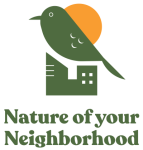Supporting safety and urban biodiversity through environmental design
Safety through environmental design
Nagle Place represents an incident-prone area of Capitol Hill where violence, drug dealing, and property damage are common. This project leans on principles of Crime Prevention Through Environmental Design (CPTED) while holding a critical view of associated tools, which can be used to reduce a sense of belonging rather than increase it. Natural surveillance, natural access control, territorial reinforcement, activity support, and maintenance: adding planters with trees limits illegal parking, and planters along with public art reclaim the area for residents, businesses, institutions, and community members, increasing foot traffic while showing care and encouraging positive social interactions. The project does not remove encampments or otherwise intend to deter pedestrian lingering – rather, these interventions are meant to add rather than subtract people.
Increasing biodiversity with tree canopy
This project has its roots in Nature of Your Neighborhood, a collaboration between the Capitol Hill EcoDistrict, Birds Connect Seattle, and the Seattle Bird Conservation Partnership, which sought to create a biodiversity corridor running from Volunteer Park to Seattle University, connecting green spaces like Lowell Elementary School and Cal Anderson Park along the way. Its central premise is that the Right-of-Way (ROW) can be leveraged to enhance connectivity for people, birds, and other pollinators by adding habitat-supporting plants. Adding even small areas of new habitat can have a positive impact on wildlife, acting as “stepping stones” between fragmented habitat patches, facilitating movement between them, and providing resources.
The ROW in Seattle is defined as the space between one property line (the outer edge of a sidewalk, for example) and another, encompassing sidewalks, planting strips, curbs, and streets. Increasingly, the ROW is expected to hold tree canopy enhancements despite lots of competing demands on the space. Planter boxes in the street against the curb are one way to avoid these constraints temporarily.
In Capitol Hill, where median household income doubles from the Pike Pine corridor to the north end along Aloha, the benefits of tree canopy are not equally shared. Moving south, tree canopy deteriorates, and heat islands are more common.
About Akebono Cherry Trees
Even though these trees aren’t native, the benefits they offer, such as food, habitat, and canopy, are plentiful. They are not harmful or invasive. In spring, they will bloom brightly and, in fall, their leaves will turn golden. As stand-outs along the street, they will encourage people to notice how birds interact with trees



